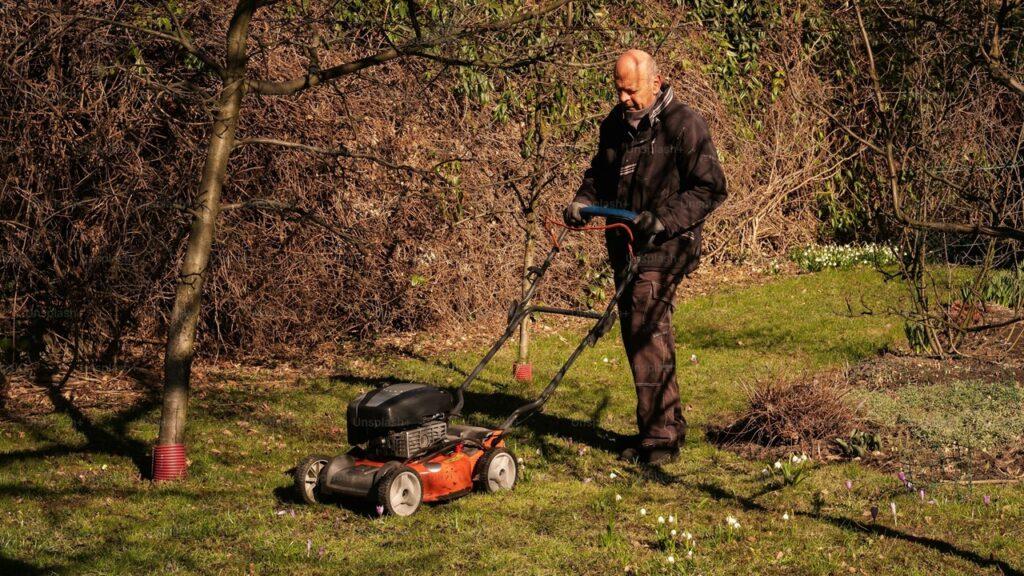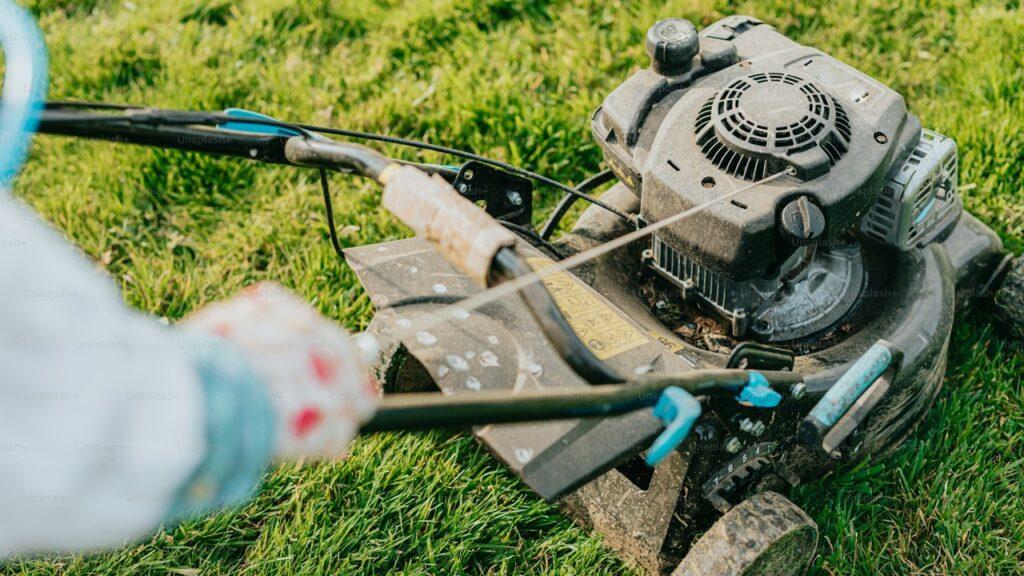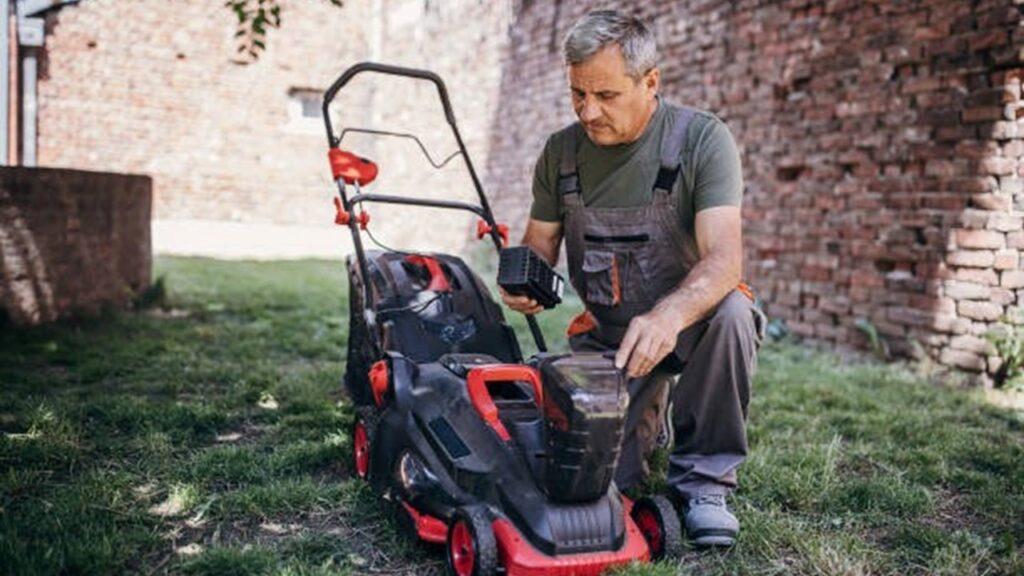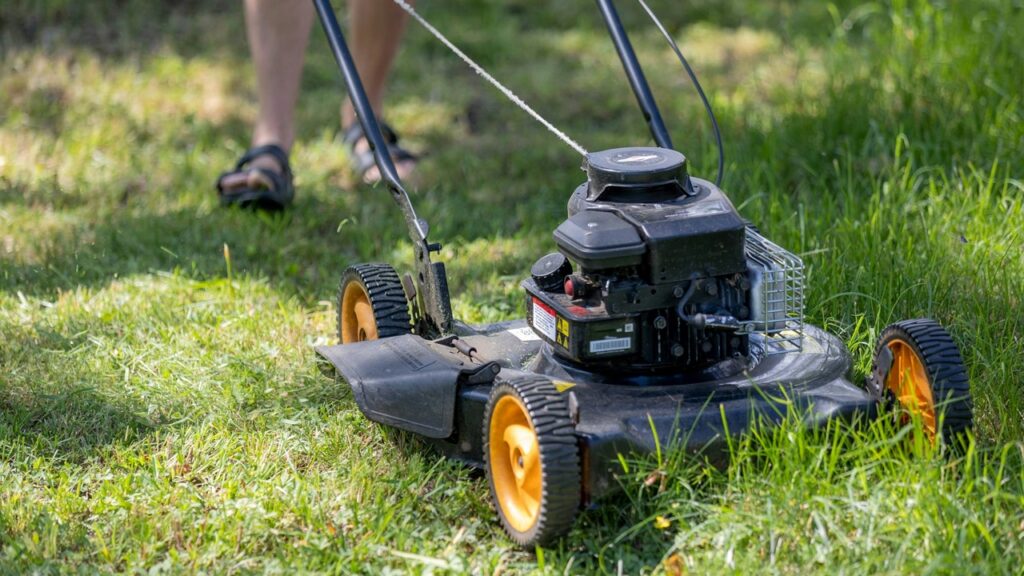
There are 15 main types of lawn mowers, including push mowers, self-propelled models, reel mowers, hover mowers, ride-on tractors, and robotic options. The best type depends on your lawn size, terrain, and how much effort you want to put in.
In this article, we’ll walk through all the common types of lawn mowers, what they’re good for, and how they compare. Whether you have a tiny yard or acres of grass, this will help you figure out which mower actually makes sense for your needs.
Main Types of Lawn Mowers: Quick Overview
Here’s a quick look at the 15 most popular types of lawn mowers:
- Push Mowers
- Self-Propelled Mowers
- Manual Reel Mowers
- Hover Mowers
- Rotary Mowers
- Cylinder Mowers
- Lawn Tractors
- Zero-Turn Mowers
- Rear-Engine Riding Mowers
- Robotic Lawn Mowers
- Electric Mowers (Corded)
- Gas-Powered Mowers
- Battery-Powered Mowers
- Front-Wheel Drive Mowers
- All-Wheel Drive Mowers
Walk-Behind Mowers (For Small to Medium Lawns)
If your yard is under half an acre, walk-behind mowers are usually your best bet. They’re simple, affordable, and easy to store.
1. Push Mowers
Push mowers are exactly what they sound like—you push them. The motor only powers the blades, not the wheels. That means you’re the one doing the moving. These mowers are a solid pick for small, flat lawns where maneuvering isn’t too tough. They’re usually cheaper and lighter than other types.
Push mowers give you full control and are easy to maintain. But if your yard has hills or thick grass, they can be tiring to use. A push mower is great if you want something simple and don’t mind a bit of a workout.
2. Self-Propelled Mowers
These take some of the work off your hands. The engine powers the wheels, so all you have to do is steer. Most models let you adjust the speed too, which is handy if you’re mowing on slopes or rough patches.
Self-propelled mowers are perfect for medium lawns or anyone who wants to make mowing a little easier. They do cost more than push mowers, but the convenience is worth it if you’re mowing regularly.
3. Manual Reel Mowers
Manual reel mowers don’t have an engine. You push, and the spinning blades slice the grass like scissors. They’re quiet, good for the environment, and cheap to run. No gas, no cords, no battery—just muscle power.
They work best on small, tidy lawns. If your grass gets too long or your yard is uneven, they’ll struggle. But for a low-maintenance, noise-free cut, reel mowers are a solid choice.
4. Hover Mowers
Hover mowers float just above the grass on a cushion of air. This makes them super easy to move around, even in awkward or sloped areas. They’re usually electric and pretty lightweight, so they’re easy to carry and store.
These are great for small or oddly shaped lawns where a traditional mower feels clunky. But they’re not very powerful, so they’re not ideal for thick or tall grass.
5. Rotary Mowers
Rotary mowers are the most common type. They have a single, fast-spinning blade underneath that cuts the grass by impact. They’re versatile and can handle most grass types and lengths.
They don’t give the cleanest cut, but for regular yard work, they’re reliable and easy to use. You’ll find rotary mowers in both electric and gas versions, walk-behind and ride-on.
6. Cylinder Mowers (Reel Mowers with Engine or Manual)
Cylinder mowers have a set of blades that spin vertically and cut like scissors. These are ideal for neat, flat lawns and give a sharper cut than rotary models. Many lawn lovers use them to get that striped, manicured look.
They can be manual or powered. Either way, they need to be used often. If your grass grows too long, a cylinder mower will struggle to keep up. They’re great for appearance, but not the best for overgrown or uneven lawns.
Ride-On Mowers (For Large Lawns and Open Spaces)
If your yard is over half an acre, especially if it’s flat and open, a ride-on mower can save you a lot of time and effort. These are built for bigger jobs and take the physical work out of mowing.
7. Lawn Tractors
Lawn tractors look a lot like small farm tractors. They have the cutting deck mounted underneath, between the front and rear wheels. These are great for large lawns, and many come with extras like tow hitches for hauling garden tools or even small trailers.
They’re comfortable to drive and can handle a good amount of ground. The downside? They’re not great at turning tightly or getting close to edges. Still, for wide open spaces, lawn tractors get the job done fast.
8. Zero-Turn Mowers
Zero-turn mowers are the most maneuverable ride-on mowers you can get. They can spin in place, making them perfect for yards with lots of trees, flower beds, or tight corners. The steering is usually done with two handles or lap bars instead of a wheel.
They cut fast, turn on a dime, and leave a clean finish. If you have a large lawn with obstacles or want to mow quickly, this is a great option. Just know they can take a little practice to drive smoothly at first.
9. Rear-Engine Riding Mowers
These are a bit smaller than lawn tractors and usually have the engine in the back. They’re easier to store and better for medium-large lawns that don’t need heavy-duty power.
They’re slower than tractors or zero-turns but are a nice in-between option if you want the comfort of riding without the size and price tag of a big machine. They also tend to be a little easier to handle for new users.
Robotic and Powered Lawn Mowers (Low Effort Options)
If mowing feels like a chore you’d rather skip, or you want something quiet and convenient, these options are worth a look. They’re built for ease, and some can even handle the job while you relax inside.
10. Robotic Lawn Mowers
Robotic mowers are like little lawn Roombas. Once you set them up with a boundary wire and schedule, they’ll automatically cut your grass on their own. Most return to their charging station when the battery runs low, then get back to mowing.
They’re super quiet and work best when they’re trimming regularly. Instead of collecting clippings, they leave tiny bits of grass behind that act like mulch. Ideal for people who want a hands-off solution and don’t mind a bit of setup.
11. Electric Mowers (Corded)
Corded electric mowers are lightweight, quiet, and simple to use. Just plug them in and go. They’re perfect for small to medium yards where a power outlet is nearby.
They don’t need gas or charging, and maintenance is minimal. The only catch is the cord—you’ll need to be careful not to mow over it, and you’re limited to how far it can reach. But if your lawn isn’t huge, this type is easy and affordable.
12. Gas-Powered Mowers
Gas mowers are powerful and great for bigger lawns or tough grass. They’re not tied to a cord or battery, so you can mow as long as there’s fuel in the tank. This makes them a top choice for large or uneven yards.
They do require more upkeep—oil changes, spark plugs, and general engine care. They’re also noisier and not as eco-friendly. But if you want cutting power and don’t mind the maintenance, gas mowers can handle a lot.
13. Battery-Powered Mowers
Battery mowers offer the best of both worlds. They’re cordless like gas mowers but quiet and clean like electric ones. You get flexibility without fumes or engine noise.
They work well for small to medium lawns, depending on the battery life. Most run for about 30 to 60 minutes per charge. Keep in mind that batteries eventually need to be replaced, and you may want a backup battery if your yard is big.
Drive Types (For Slope and Traction Control)
If your yard isn’t flat or you’ve got some tricky spots to mow, the way your mower drives makes a big difference. These last few types are all about how the wheels get their power.
14. Front-Wheel Drive Mowers
These mowers pull themselves forward using the front wheels. They’re easy to steer and do well on flat lawns with lots of twists and turns. If you often need to pivot or turn the mower around trees or garden beds, front-wheel drive makes that easier.
But on hills, they’re not as strong. When you tilt the mower back to turn or go uphill, the front wheels lose traction. So they’re best for level ground.
15. All-Wheel Drive Mowers
All-wheel drive (AWD) means all four wheels move together, giving better grip and power. These mowers are built for hilly, uneven, or rough lawns. They’re especially helpful if your yard has steep slopes or gets muddy in spots.
They can be heavier and a bit pricier, but if you’ve got a tricky yard, AWD can save you a lot of frustration. They’re kind of like the SUV of lawn mowers.
How to Choose the Right Type of Lawn Mower
There’s no one-size-fits-all mower. It really depends on your yard, your budget, and how much time and effort you want to put into mowing. If you’re stuck, just start by asking the basics. When it comes to choosing the best lawn mower, it helps to think about what actually matters to you.
Here are a few questions to ask yourself:
- How big is my lawn? – Small lawn? A push, reel, or hover mower might be enough. Bigger yard? Think self-propelled, ride-on, or robotic.
- Is the yard flat or sloped? – For hills, go with a self-propelled or all-wheel drive mower. For flat ground, any walk-behind will work fine.
- Do I want to do the work or let a machine handle it? – If you like a little exercise, reel or push mowers are simple. If you’d rather not break a sweat, look at robotic or ride-on options.
- What’s my budget and storage space like? – Manual mowers are cheapest and take up little space. Ride-ons and robotic mowers cost more and need more room.
Conclusion
At the end of the day, the best lawn mower is the one that fits your yard and your lifestyle. There are 15 main types out there, and each one has a job it does best. If you know your lawn size, how often you mow, and how hands-on you want to be, narrowing it down gets much easier.
Use this guide as a starting point and match the mower to what you really need. A little thought upfront can save you a lot of effort later.
FAQs
What type of mower gives the best lawn stripes?
Cylinder mowers are the go-to for that clean, striped finish. Some rotary mowers with rear rollers can also do the trick.
What’s the easiest mower to use for seniors?
Battery-powered self-propelled mowers are a great choice. They’re light, quiet, and don’t need much effort to move.
Are robotic mowers safe for pets and kids?
Most are designed with safety sensors that stop the blades when lifted or bumped. Still, it’s smart to keep an eye on things while they’re running.
Do hover mowers work on bumpy lawns?
They’re better for flat or slightly sloped yards. On very uneven ground, they can miss spots or feel unstable.

At our core, we’re a group of passionate yard, garden and mown enthusiasts. We dive deep into the world of backyard of your home. We try to provide as much value to the readers with our information and how to blog articles as possible along with proper information-based reviews as well.




